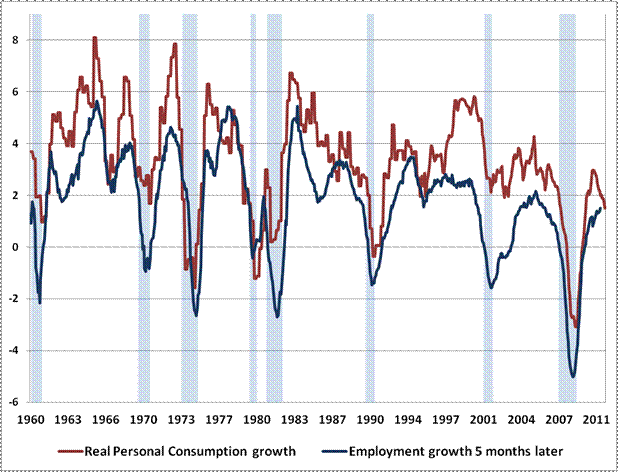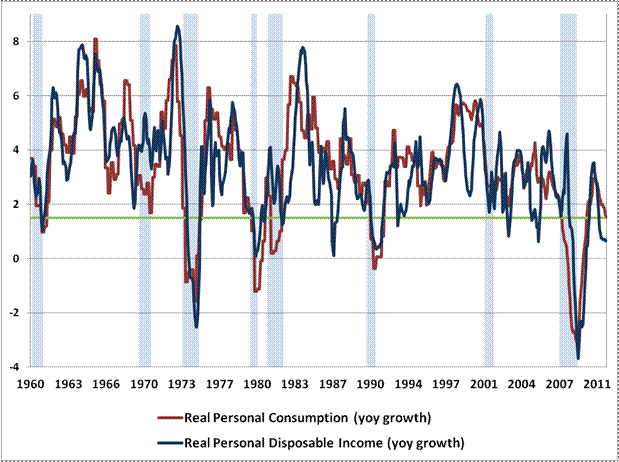European Union : The Risk of Splitting Is High
On March 25, 1957 in Rome, two representatives each from West Germany, Italy, the Netherlands, Belgium and Luxembourg sat around a large, fancy table, took out their large, fancy fountain pens and signed a rather large and fancy document that was rather grandly known as The Treaty of Rome. At a stroke the European Economic Community (or 'Common Market') was established (along with the European Atomic Energy Commission those Europeans do LOVE a commission), the purpose of which was to gradually eliminate trade barriers between member nations and introduce common policies for agriculture, transportation and economic relations between both the member states and those outside the Treaty.
In 2007, on the 50th anniversary of the signing of the treaty, one of the lawyers responsible for its drafting, Pierre Pescatore, told the BBC that all was not as it seemed that day:
"They signed a bundle of blank pages... The first title existed in four languages and also the protocol at the end; nobody looked at what was in between."
A fitting start for what would eventually morph into the European Union as we know it today. The reason for the hastiness in getting an 8-inch high stack of papers signed by the dignitaries present? Fears that General de Gaulle could soon return to the French presidency and block the treaty.
And so it began.
But the origins of the Treaty of Rome were founded in the Treaty of Paris which created the European Coal and Steel Community (ECSC) 6 years earlier, in April 1951, in an attempt to bind together a continent rent asunder by the horror of WWII. The architects of this political construct were a pair of Frenchmen, Robert Schuman (the French Foreign Minister) and Jean Monnet (a civil Servant), and their idea was to tie together the coal and steel industries of France and Germany under a High Authority that would allow other European countries to join should they wish to do so, thus reuniting the war-torn countries of Europe and forever banishing the chances of another conflict between them. Italy and the Benelux countries joined the negotiations and, on April 18 1951, the Treaty was signed.
The intervening 6 years between the signing of the Treaty of Paris and that of Rome, were a sign of what was to come in Europe as Commission after Commission, several Assemblies, a couple of Communities and a bunch of Committees were formed and countless Reports written to be presented at numerous Conferences in an attempt to further the idea of a united and peaceful Europe. This passage does a very nice job in outlining just how bureaucratic Europe was, even in its nascence:
(Wikipedia): The Spaak Report drawn up by the Spaak Committee provided the basis for further progress and was accepted at the Venice Conference where the decision was taken to organise an Intergovernmental Conference. The report formed the cornerstone of the Intergovernmental Conference on the Common Market and Euratom at Val Duchesse in 1956.
The outcome of the conference was that new communities would share the Common Assembly (now Parliamentary Assembly) with the ECSC, as it would with the Court of Justice. However they would not share the ECSC's Council of High Authority. The two new High Authorities would be called Commissions, this was due to a reduction in their powers. France was reluctant to agree to more supranational powers, and so the new Commissions would have only basic powers and important decisions would have to be approved by the Council
The Treaty of rome would form the foundation for what would later become the EU that we know and love 50+ years on in all its bureaucratic glory and amongst those original signatories as well as those that abstained are the clues as to just how important a part the idea of 'Europe' was and is to various countries.
Case in point: the Netherlands and the United Kingdom.
The Dutch were signatories to the Treaties of Paris and Rome and to every major European Treaty since and are staunch supporters of a unified Europe as well as having a reputation for being amongst the more fiscally disciplined members of the EU. When Greece and, latterly, Spain prove to be a little recalcitrant when it comes to balancing the cheque book, Europeans shrug and express dissatisfaction but little surprise. When the Dutch announce they will be a little short in meeting their fiscal targets, you can bet your bottom euro that eyebrows will be raised.
A mere six months ago, in September of 2011, Dutch Prime Minister Mark Rutte and his Finance Minister, the delightfully-named Jan Kees de Jager, penned an opinion piece in the Financial Times that was entitled 'Expulsion From The Eurozone Has To Be The Final Penalty' in which they laid out their views on fiscal profligacy amongst the more prodigal (Southern) states in the union. Right from the outset, Rutte and de Jager were in no mood to take prisoners:
(FT): The eurozone is in stormy waters. The turmoil on the financial markets shows no sign of abating. Tackling the debt crisis is complex and calls for several immediate measures. But amid our hectic day-to-day efforts to fight the crisis, we need to ask how we can guarantee a stable euro and prosperous Europe in the long term.
What is to be done? Our answer is that we must anchor the agreements we have made more firmly and take tougher action to enforce them.
Tough talk indeed from two hitherto bit-part actor in the Merkozy/Shaueble/Juncker Show.
Clearly warming to the sudden glare of the spotlight, Rutte and de Jager took off their jackets, loosened their ties and rolled up their sleeves:
...(b)ut the main cause of the current problems is that some countries played fast and loose with the very rules designed to guarantee budgetary discipline. Other countries allowed that to happen, and this took place at a time when the financial markets were being rapidly integrated. The result is that acute financial problems can spread from one country to another at lightning speed.
So what is to be done now? We must return to the anchors of the eurozone. The rules are still valid, but all participants must abide by them. If the eurozone is to survive in its present form as a stable currency union that supports the internal market and our prosperity, there needs to be radical break with the past. Ah yes, but it's all very well proposing a 'return to the anchors of the eurozone', but practicallyspeaking, what does that entail, we wondered?
Well, we weren't left wondering for long:
What we propose is twofold, and builds on the ideas already put forward by the French and German leaders. First, we call for independent supervision of compliance with the budgetary rules. Second, we believe that countries that systematically infringe the rules must gradually face tougher sanctions and be allowed less freedom in their budgetary policy.
Independent supervision requires a commissioner for budgetary discipline. His or her powers should be at least comparable to those of the competition commissioner. The new commissioner should be given clear powers to set requirements for the budgetary policy of countries that run excessive deficits. The first step is to require the country concerned to make adjustments to its public finances.
If the results are insufficient, the commissioner can force a country to take measures to put its finances in order, for example by raising additional tax revenue. At this stage sanctions can also be imposed, such as reduced payments from the European Union Cohesion and Structural Funds, or higher contributions to the EU budget. The final stage will involve preventive supervision, and the budget will have to be approved by the commissioner before it can be presented to parliament. At this stage, the member state's voting rights can also be suspended.
Countries that do not want to submit to this regime can choose to leave the eurozone. Whoever wants to be part of the eurozone must adhere to the agreements and cannot systematically ignore the rules. In the future, the ultimate sanction can be to force countries to leave the euro.
Bravo! Finally, amidst the back and forth and contradictory statements of the main players on the EU stage, some clear, concise and sensible steps proposed by one of Europe's mainstays.
But September was a LONG time ago and a matter of days after Spain's unilateral decision to abide by its own budget deficit target of 5.8% as opposed to the mandated 4.4% was announced (and a compromise quickly reached by EU finance ministers who took Senor Rajoy at his word that the 2013 target of 3% would still be met.....<blink>), rumblings began about the likelihood of the Dutch taking on the role of (unlikely) Euro Bad Boys:
(The Economist): It was a far cry from the bright autumn day in 2010 when the smiling leaders of the three right-of-centre Dutch parties came together to announce a deal to run the country. The Liberals, the largest party, would form a minority coalition with the Christian Democrats. Outside support from Geert Wilders's Freedom Party would give the government a slim majority in parliament. This year, on a foggy March morning, the same three leaders looked sombre in the face of a daunting task: how to cut another €9 billion ($12 billion) from the budget for 2013 when the economy is already in recession.
The extra cuts are needed to deal with what forecasters say would otherwise be a 2013 budget deficit of 4.5% of GDP, way over the 3% limit enshrined in the euro zone's new fiscal pact. Yet Mr Wilders is likely to object. Indeed, he is in an objecting mood: this week he presented a report commissioned from British researchers making the case for Dutch withdrawal from the euro. Mr Wilders, who wants a referendum on the matter, claims that the country has not profited and may even have lost from its membership of the single currency.
Ten days after The Economist published that article, the Dutch officially jumped the shark:
(UK Daily Telegraph): Just a few weeks ago officials from Madrid begged in Brussels for their fiscal targets to be relaxed they said the current ones were "suicidal" for Spain. Jan Kees de Jager, the Dutch finance minister, was among them who demanded the answer to be "neit".
So now fiesta, forever, all night long today the Netherlands Bureau for Economic Policy Analysis (CPB) said the country's budget deficit could increase to 4.6pc of GDP during 2013 and 2014. The level drives a coach and horses through the fiscal pact which is less than three weeks old.






